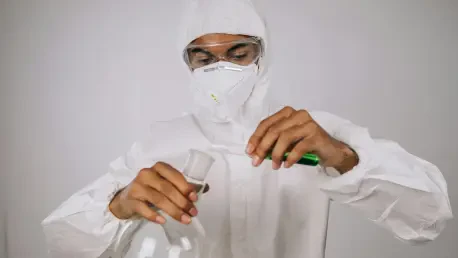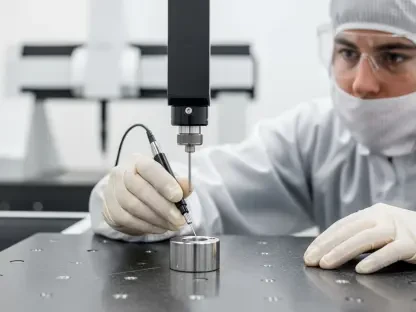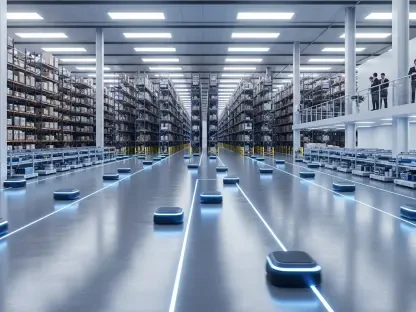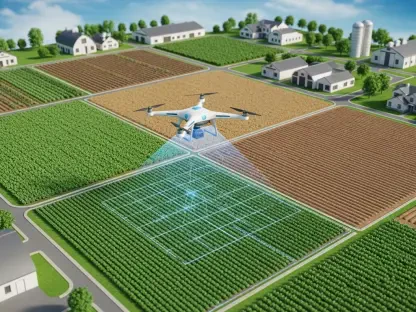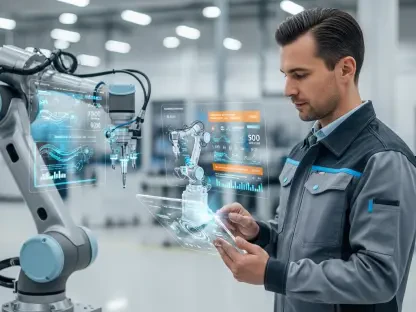Overview of the Chemical Safety Board and Industrial Safety Landscape
Imagine a catastrophic chemical plant explosion that claims lives and devastates a community, only to be followed by a thorough, independent investigation that uncovers hidden flaws and prevents future disasters. This is the critical role played by the U.S. Chemical Safety Board (CSB), an agency dedicated to investigating major chemical incidents in the industrial sector. Established to provide non-punitive, root-cause analyses, the CSB delivers publicly accessible reports that drive safety improvements across chemical manufacturing, ensuring accountability and transparency for workers and the public alike.
The industrial safety landscape today remains a high-stakes arena where preventing catastrophic incidents is paramount. With chemical plants handling volatile substances under intense conditions, even minor oversights can lead to devastating outcomes. The industry grapples with balancing operational efficiency against stringent safety demands, as incidents not only endanger lives but also incur massive financial and reputational losses. Stakeholders, including plant operators, employees, and nearby communities, rely on robust safety mechanisms to mitigate risks.
Key segments within this sector include petrochemicals, specialty chemicals, and fertilizers, each with unique hazards requiring tailored safety approaches. Major players range from multinational corporations to smaller facilities, all under the scrutiny of federal oversight from agencies like the CSB, alongside the Occupational Safety and Health Administration (OSHA) and the Environmental Protection Agency (EPA). Corporate responsibility intersects with this oversight, as companies adopt internal safety protocols while navigating compliance. The rise of digital tools, such as sensors and data analytics, is reshaping practices, complemented by regulations that mandate rigorous reporting and hazard management, setting the stage for technological innovation in safety.
The Emergence of AI in Industrial Safety
Key Trends and Technological Advancements
Artificial Intelligence (AI) is rapidly transforming industrial safety within the chemical sector by introducing cutting-edge tools for risk management. Predictive analytics stands out as a leading trend, enabling companies to anticipate potential hazards by analyzing historical data and identifying patterns that signal equipment failures or process deviations. Real-time monitoring systems, powered by AI, provide instant alerts on anomalies, allowing swift corrective actions before issues escalate.
Beyond these, technologies like machine learning and natural language processing (NLP) are gaining traction for their ability to process vast datasets and extract actionable insights. Digital twins, virtual replicas of physical processes, allow for detailed simulations to test safety scenarios without real-world risks. These advancements reflect a broader shift in industry behavior toward proactive rather than reactive risk management, opening doors for AI-driven solutions to enhance safety protocols.
This evolution also aligns with growing opportunities for innovation, as firms increasingly prioritize automation to minimize human error. The focus is shifting toward integrating AI into everyday operations, from maintenance scheduling to hazard identification. As adoption accelerates, the chemical industry is witnessing a cultural pivot, emphasizing prevention through technology and fostering collaboration among tech providers and safety experts to address complex challenges.
Impact and Performance Metrics
The tangible impact of AI in chemical safety is evident in adoption rates and measurable outcomes across the industry. Recent surveys indicate that nearly half of chemical firms implementing AI tools report significant improvements in hazard detection and response times. These technologies have contributed to safer workplaces by enabling data-driven decision-making at an unprecedented scale.
Specific metrics underscore this progress, with studies showing a notable 12% reduction in incident rates directly linked to AI-based risk assessments. Such figures highlight how predictive models and automated systems can identify subtle risks that might elude human oversight, thereby curbing accidents. Companies leveraging these tools also report enhanced compliance with safety standards, as AI streamlines documentation and monitoring processes.
Looking ahead, projections suggest AI’s role in safety will expand significantly over the next few years, with increased investment expected to drive further innovation. By integrating AI more deeply into operational frameworks, the industry anticipates a sustained decline in workplace hazards. This forward-looking perspective emphasizes the potential for technology to not only complement existing safety measures but also redefine how risks are managed in dynamic industrial environments.
Challenges in Replacing the CSB with AI
The notion of AI fully replacing the CSB faces substantial hurdles, primarily due to the technology’s inherent limitations. While AI excels at processing data and predicting risks, it relies heavily on high-quality input, much of which originates from detailed CSB investigations. Without this foundational data, the accuracy and reliability of AI systems could diminish, undermining their effectiveness in preventing incidents.
Technological gaps further complicate this replacement scenario, as AI lacks the capacity to replicate the independent judgment and public accountability that define the CSB’s mission. Algorithms cannot conduct public hearings or drive cultural shifts in the same way human-led investigations do, nor can they offer the nuanced context needed for systemic safety reforms. These shortcomings highlight a critical dependency on human oversight to interpret and act on AI-generated insights.
Additionally, regulatory and cultural barriers pose significant challenges to relying solely on corporate-driven AI solutions. Without federal oversight, there is a risk of inconsistent safety standards across firms, as well as diminished transparency for stakeholders. To address these issues, strategies such as integrating AI with independent audits and fostering industry-wide collaboration could help bridge gaps, ensuring that technological advancements support rather than supplant the essential role of structured oversight.
Regulatory Framework and the Role of Oversight
The regulatory landscape for industrial safety is a complex web of mandates and guidelines, with the CSB playing a unique role through its non-punitive investigative approach. Unlike OSHA or the EPA, which focus on enforcement and compliance, the CSB prioritizes learning from incidents to prevent recurrence, offering recommendations that influence industry practices. Its public reports serve as a vital resource for systemic improvement, accessible to all stakeholders.
Potential defunding of the CSB raises alarms about the loss of transparency and the shared learning it facilitates. Such a scenario could create a void in national oversight, leaving gaps in understanding root causes of major incidents. Without this independent perspective, the industry risks repeating preventable errors, as corporate self-regulation may lack the credibility and breadth of federal investigations.
Compliance with other regulatory bodies like OSHA and the EPA remains essential, and AI can support adherence by automating reporting and monitoring tasks. However, technology alone cannot replace the accountability ensured by federal entities. Striking a balance between innovation and oversight is crucial to maintain public trust, ensuring that safety advancements through AI operate within a framework of rigorous, transparent governance that prioritizes worker and community well-being.
Future Outlook: AI and the CSB in Harmony
Envisioning the future of industrial safety involves a synergy between AI tools and continued CSB oversight, creating a robust framework for prevention and response. AI’s capacity for real-time analysis and predictive modeling can enhance the CSB’s findings, allowing for faster implementation of safety recommendations. This partnership could redefine how incidents are analyzed and addressed, blending technological precision with human insight.
Potential disruptors, such as political shifts or budget constraints, loom as challenges that could impact safety culture. Reduced funding for federal agencies might push companies to rely more heavily on internal AI solutions, risking fragmented safety standards. Industry demands for safer practices, driven by consumer expectations and corporate accountability, will likely pressure firms to innovate, even amidst such uncertainties.
Global economic conditions also play a role, influencing investment in safety initiatives and AI development. As markets fluctuate, funding priorities may shift, affecting the pace of technological adoption. Despite these variables, the trajectory points toward a collaborative model where AI amplifies the CSB’s mission, meeting evolving needs through integrated systems that prioritize both efficiency and protection across the chemical manufacturing sector.
Striking a Balance for Industrial Safety
Reflecting on the insights gathered, it becomes clear that the Chemical Safety Board is an irreplaceable pillar in fostering transparency and accountability through its independent investigations. The potential of AI to bolster safety with predictive tools and real-time monitoring stands out as a transformative force, yet its limitations in judgment and public engagement are evident constraints that must be acknowledged.
Looking back, the discussions underscored a consensus that combining AI with federal oversight offers the most comprehensive path to safeguarding industrial environments. As a next step, chemical companies are encouraged to deepen investments in cutting-edge technologies while cultivating a culture of continuous learning from past incidents. Simultaneously, advocacy for preserving the CSB’s mission emerges as a critical action, ensuring that its unique contributions to systemic safety are not lost.
Beyond these measures, fostering industry coalitions to share AI-driven insights and best practices surfaces as a promising avenue to enhance collective safety standards. This approach, grounded in collaboration, aims to address gaps that neither technology nor oversight can tackle alone. Ultimately, the journey highlights a shared responsibility to innovate responsibly, protecting lives through a balanced framework that leverages every available tool and perspective.
